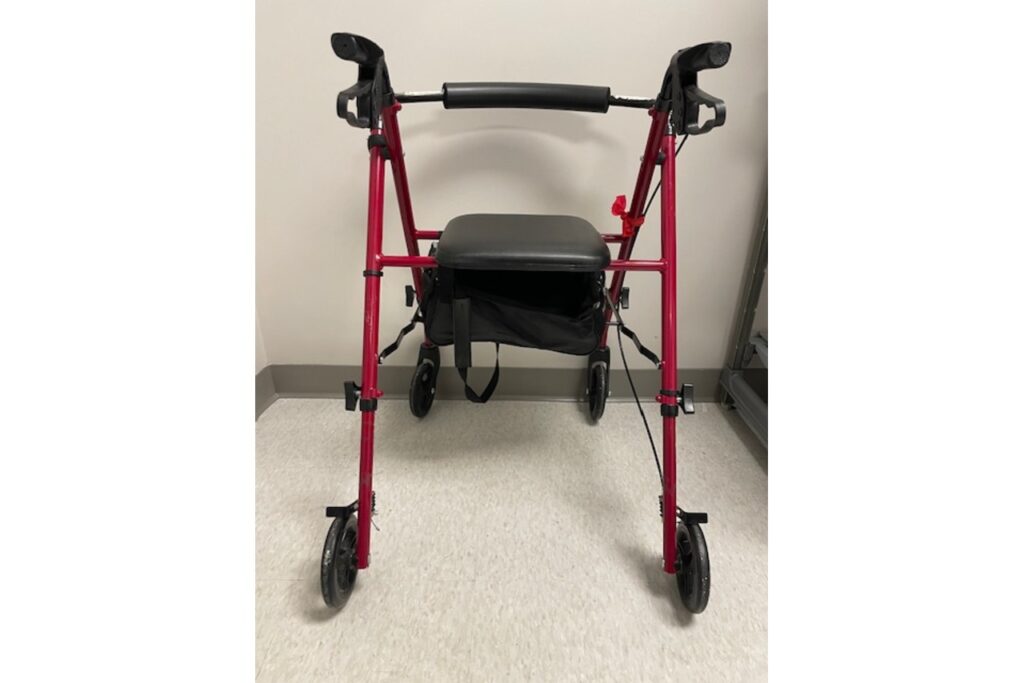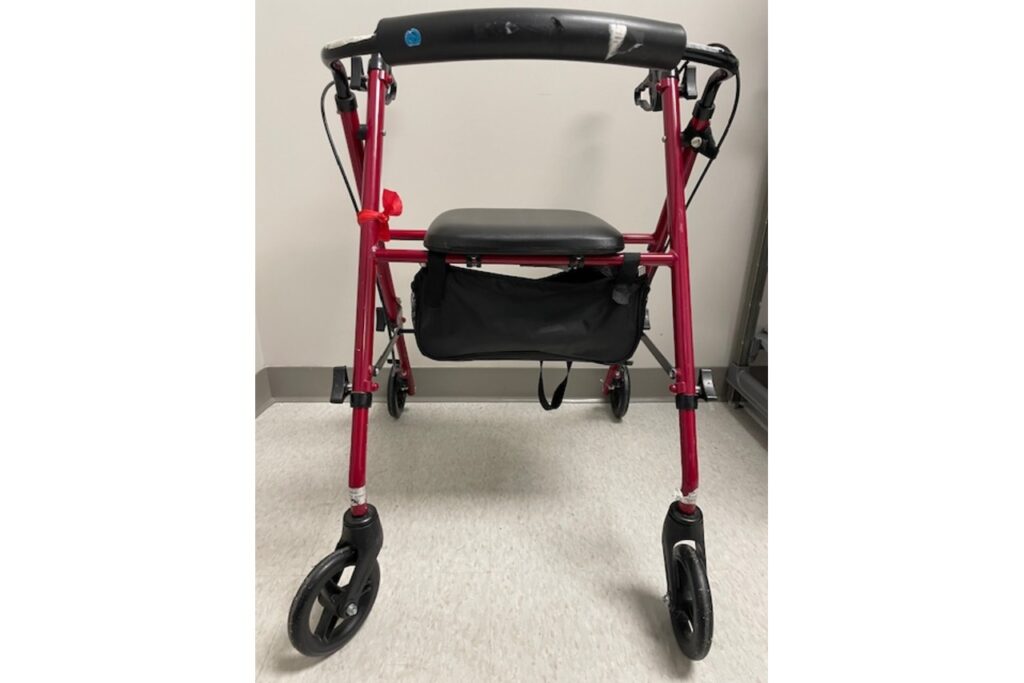In rehabilitative therapies, enhancing patient mobility is a key goal. Designed to provide support and stability, a rollator is invaluable for helping patients regain independence. This post aims to offer healthcare professionals and occupational therapists an in-depth look at how rollators integrate into occupational therapy practices, the benefits they offer, and practical tips for effective use.
Understanding the Role of Rollators

Rollators, also known as wheeled walkers, feature wheels, hand brakes, and often a seat for resting. These devices are more than just mobility aids; they are tools that can significantly improve the quality of life for individuals with mobility challenges.
In occupational therapy, the primary focus is on enabling patients to perform daily activities independently and safely. Rollators help in achieving this by providing the necessary physical support, allowing patients to move more freely within their environment.
Benefits of Rollators in Occupational Therapy
One of the main advantages of using a rollator is increased independence. Patients who use rollators often find they can perform daily tasks more easily, which boosts their confidence and motivation. Additionally, using a rollator can reduce the risk of falls, providing a safer alternative to traditional walkers or canes.
Another benefit is improved posture and balance. Rollators encourage users to stand upright, which can help alleviate back pain and enhance stability. This is particularly important for patients with conditions like arthritis or Parkinson’s disease, where maintaining balance is a significant concern.
Finally, rollators can aid in cardiovascular health. Encouraging movement and exercise, even in small amounts, can have a positive impact on heart health. For patients who might otherwise be sedentary, a rollator can be a gateway to more active living.
Choosing the Right Rollator for Your Patients
Selecting the appropriate rollator for your patient is crucial. Factors like height, weight capacity, and specific health conditions should all be considered. The rollator should be easily adjustable to match the patient’s height, ensuring comfort and effectiveness.
Height and Weight Considerations
When choosing a rollator, it’s essential to consider the patient’s height and weight. A rollator that is too tall or too short can cause discomfort and undermine its effectiveness. Adjustable-height rollators are ideal as they can be customized to fit each patient perfectly.
Weight capacity is another important factor. Ensure the rollator can support the patient’s weight without compromising stability and safety. Most rollators come with a specified weight limit, so it’s important to choose one that meets your patient’s needs.
Specific Health Conditions
Patients with specific health conditions may require specialized rollators. For instance, those with arthritis might benefit from rollators with ergonomic hand grips to reduce strain on the hands and wrists. Patients with neurological conditions, such as Parkinson’s disease, might need a rollator with enhanced stability features to prevent tipping.
Additional Features
Consider any additional features that might benefit your patient. Some rollators come with built-in seats, allowing patients to rest when needed. Others have storage compartments, which can be convenient for carrying personal items. These added features can make a significant difference in the patient’s overall experience and satisfaction with the rollator.
Integrating Rollators into Rehabilitative Therapy

Successfully integrating rollators into rehabilitative therapy requires a tailored approach. Each patient’s needs and abilities will differ, and it’s essential to customize the therapy plan accordingly.
Initial Assessment
Begin with a thorough assessment of the patient’s mobility and functional capabilities. This will help you determine the type of rollator that will best suit their needs. Consider their home environment, daily activities, safety awareness, cognitive status, vision, grip strength, balance and any specific challenges they face. A patient needs to be independent to lock and unlock the brakes to prevent risk of falls.
A comprehensive assessment will also help identify any potential barriers to using a rollator effectively. For example, narrow hallways or steps could pose challenges that need to be addressed before introducing a rollator.
Training and Education
Once the appropriate rollator has been selected, training the patient on its proper use is crucial. This includes educating them on how to adjust the rollator, use the brakes, and maintain proper posture while walking. Demonstrate these techniques and allow the patient to practice under supervision.
Education should also cover safety precautions. Teach patients how to use the rollator on different surfaces, such as carpets, tiles, and outdoor environments. Ensure they understand the importance of regular maintenance checks, such as inspecting the wheels and brakes.
Progress Monitoring
Regularly monitor the patient’s progress and adjust the therapy plan as needed. This might include changing the type of rollator, modifying the height, or introducing additional exercises to improve strength and balance.
Encouraging Patient Feedback
Encourage patients to provide feedback on their experience with the rollator. This can help identify any issues or areas for improvement. Patients who feel heard and supported are more likely to engage actively in their therapy and achieve better outcomes.
Overcoming Common Challenges
Patient Resistance
Some patients might resist using a rollator due to stigma or a desire to maintain their independence. Address these concerns by highlighting the benefits of rollator use and emphasizing that it can enhance, rather than diminish, their independence.
Another barrier is cost and insurance coverage. Extra coordination with case management or social services may be needed to assist the patient to obtain the rollator without cost from the patient’s insurance plan. A patient may also be willing to pay for the rollator out of pocket or explore other options to gain a rollator and little to no cost to the patient using donation programs or centers.
Environmental Barriers
Environmental barriers, such as narrow doorways or uneven surfaces, can pose challenges for rollator use. Work with patients to identify and address these barriers. This might involve making modifications to their home environment or teaching them techniques to navigate challenging terrain.
Maintaining Engagement
Keeping patients engaged and motivated is essential for successful rehabilitation. Incorporate activities and exercises that are enjoyable and meaningful for the patient. Set achievable goals and celebrate milestones to maintain motivation and enthusiasm.
The Future of Rollators in Occupational Therapy
The future of rollators in occupational therapy looks promising. Advancements in technology and design are continuously improving the functionality and user experience of rollators. Features such as lightweight materials, advanced braking systems, and smart technology integration are making rollators more effective and user-friendly.
Technological Advancements
Innovations such as smart rollators with built-in sensors and connectivity to mobile apps are emerging. These technologies can provide real-time data on the patient’s mobility and offer valuable insights for therapists to tailor their treatment plans.
Customization and Personalization
The trend towards customization and personalization is also influencing the design of rollators. Patients can now choose from a variety of colors, styles, and features to suit their preferences and needs. This not only enhances the user experience but also encourages acceptance and use of the rollator.
Increasing Awareness and Education
Efforts to increase awareness and education about the benefits of rollators are gaining momentum. Healthcare professionals and organizations are working together to promote the use of rollators and provide training and resources for both patients and therapists.
Conclusion
Rollators are powerful tools in the world of occupational therapy, offering numerous benefits for patients with mobility challenges. By understanding the role of rollators, selecting the right one for each patient, and integrating them effectively into rehabilitative therapy, healthcare professionals can help patients regain independence and improve their quality of life.
If you’re looking to explore more about rollators and how they can benefit your patients, consider reaching out to our team of experts. We offer comprehensive training and resources to help you make the most of this valuable tool in your practice.
The information provided on this website is for general informational purposes only. It is not intended as, nor should it be considered, professional or medical advice. Always consult a professional regarding your specific medical issue.
Frequently Asked Questions (FAQs) for Rollators in Rehabilitation
What is the purpose of using a rollator in rehabilitation?
A rollator serves as a supportive aid designed to improve mobility and stability during rehabilitation. It allows patients to move independently and safely, minimizing the risk of falls while enhancing confidence during physical therapy and recovery.
How do I choose the right rollator for my needs?
Choosing the right rollator involves considering several factors such as the patient’s height, weight, and specific mobility challenges. It’s crucial to assess the rollator’s features, such as adjustable handles, seat width, and wheel type. Consulting with a healthcare professional will ensure a suitable match for the patient’s requirements.
Are rollators suitable for all mobility impairments?
While rollators are versatile, they may not be ideal for all mobility impairments. Patients with severe balance issues, cognitive deficits, or those who cannot bear weight may require alternative mobility aids. An occupational therapist can provide a comprehensive evaluation to determine the most appropriate aid for individual needs.
How can I safely use a rollator on different surfaces?
To safely use a rollator on varied surfaces, it is essential to familiarize oneself with the rollator’s handling. On indoor surfaces like carpets or tiles, maintain a steady pace and utilize the rollator’s braking system. For outdoor use, practice navigating mild inclines and uneven surfaces in a controlled environment under supervision.
What maintenance is required for a rollator?
Regular maintenance of a rollator is crucial for optimal performance and safety. This includes routinely checking and adjusting brakes, inspecting wheels and tires for wear, cleaning frame and components, and tightening any loose screws or fittings. Following the manufacturer’s maintenance guidelines is highly recommended.
References
- American Occupational Therapy Association. (2020). Enhancing Mobility: Rollators in Occupational and Physical Therapy. Available at: www.aota.org
- World Health Organization. (2018). Assistive Technology for the Elderly: Promoting Mobility and Independence. Available at: www.who.int
- Smith, J., & Johnson, L. (2019). Advancements in Rollator Design: Impact on Rehabilitation Outcomes. Journal of Rehabilitation and Assistive Technologies, 12(3), 45-54.
- National Institute on Aging. (2021). Guide to Selecting Mobility Aids for Seniors and Adults with Disabilities. Available at: www.nia.nih.gov
- Miller, A. (2017). The Role of Adaptive Equipment in Occupational Therapy. Occupational Therapy Practitioners Review, 25(1), 28-36.
- Rehabilitation Engineering and Assistive Technology Society of North America (RESNA). (2020). Best Practices in the Use of Rollators for Mobility Impairments. Available at: www.resna.org
- Klein, R., & Douglas, T. (2022). Technological Innovations in Rollator Design for Enhanced Mobility. International Journal of Assistive Technology, 30(2), 71-81.
Recently Featured OT Insider Posts
I&O Medical Abbreviation: How to Use in Healthcare
Isometric vs Isotonic Exercises: How to Use in Rehabilitation
Dynamometer: How its Used in Rehabilitation
TID Medical Abbreviation: Everything You Need to Know
Slide Board Transfer: How to Safely Use in Healthcare Settings
QHS Medical Abbreviation: Everything You Need to Know
Contact Hours vs CEUs: What Professionals Need to Know
Platform Walker: How to Use Guide in Occupational Therapy
Therapeutic Use of Self for Transformative Occupational Therapy
OT Frames of Reference: Practical Applications for Patient Care
